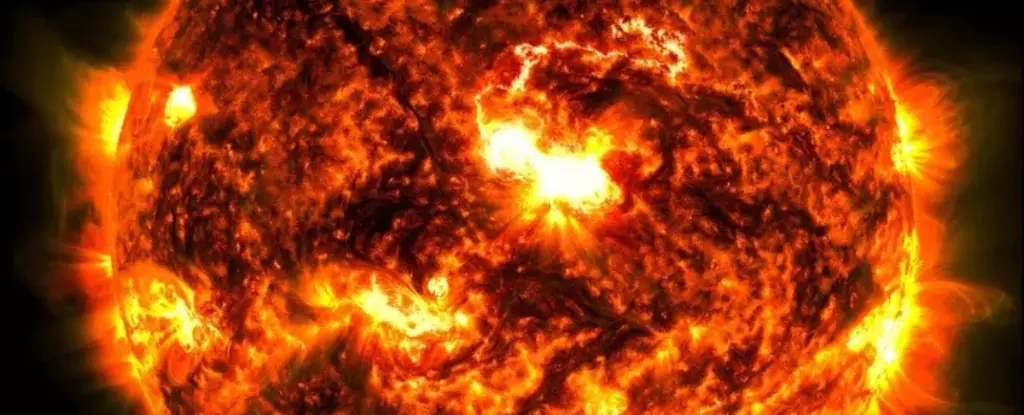The Sun, a colossal sphere of plasma at the center of our solar system, actively influences the environment of planets, including Earth. One of the most significant phenomena associated with solar activity is the coronal mass ejection (CME). These massive bursts of solar wind and magnetic fields are expelled from the Sun’s corona and can cause substantial effects on Earth’s magnetosphere. As we find ourselves in a period of heightened solar activity, predictions of CME impacts become crucial, especially when they have the potential to reach terrestrial audiences.
The recent prediction of a CME making contact with Earth on a Thursday morning signifies yet another opportunity for awe-inspiring spectacles in the night sky, such as auroras. As we approach the peak of the Sun’s 11-year solar cycle, the implications of this strong solar event could not be more pronounced. While the general public might perceive these occurrences solely as beautiful phenomena, the reality is that the repercussions are systematic and wide-ranging.
The Geomagnetic Storm Watch and Its Implications
As announced by the Space Weather Prediction Center, forecasters have issued a level 4 geomagnetic storm watch due to the anticipated arrival of the CME traveling at staggering speeds of 2.5 million miles per hour. This level, while substantial, is not unprecedented, coming just one tier below the most severe level, G5. The dynamic nature of solar excursions dictates that the final impact can swing either direction.
Shawn Dahl from the Space Weather Prediction Center delineated the precise timing of the CME’s impact, stating that predictive capabilities peak approximately 15-30 minutes prior to contact when the CME is situationally ascertainable by tracking satellites located about a million miles from Earth. This technological constraint underlines the inherent unpredictability of solar wind and its interaction with Earth’s magnetic field.
Historical Context: Lessons from Past Solar Storms
Looking back in time, it is essential to understand the potential ramifications of geomagnetic storms. The infamous “Halloween Storms” of October 2003 serve as a historical marker for the havoc such solar events can wreak. This unsettling disruption led to electricity outages in multiple regions, including Sweden, highlighting the vulnerability of modern infrastructure to cosmic phenomena. Moreover, recent geomagnetic storms encountered in May highlighted the fragility of satellite operations, as thousands required orbital adjustments due to increased atmospheric drag from atmospheric inflation caused by increased solar activity.
These historical precedents provide vital context for today’s events, illustrating the duality of beauty and threat inherent in solar interactions. The enchanting auroras visible in northern latitudes can be seen as a reminder of nature’s marvels, but they also mask the underlying vulnerabilities that society must confront.
In light of recent forecasts, preparations are underway at various levels of government and industry. The Federal Emergency Management Agency (FEMA), already grappling with natural disasters, has been informed of the incoming CME, and power grid operators are taking proactive steps to mitigate any potential disruptions. This careful balancing act signifies the delicate interplay between the awe of natural phenomena and the pragmatic concerns of modern society.
Moreover, the scientific community advocates for public awareness regarding these natural events. As auroras might extend as far south as northern California or Alabama, individuals are encouraged to step outside urban centers to witness these majestic displays. Using digital devices like cameras or smartphones can enhance visibility of auroras, allowing a wider audience to partake in the celestial ballet.
As technology continues to advance, our ability to monitor solar activity is becoming increasingly sophisticated, allowing us to anticipate events before they reach Earth. This progress fosters a deeper understanding of solar dynamics, paving the way for future preparedness and public engagement.
While the spectacle of solar activities can captivate the imagination and inspire wonder, it is equally important to recognize the inherent risks and disruptions associated with such powerful natural phenomena. By striking a balance between appreciation and awareness, humanity can better navigate the cosmic interactions that shape our planet’s environment. In facing these celestial challenges, we embrace both the beauty and unpredictability of our universe.

